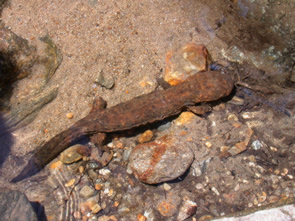
Cryptobranchus alleganiensis
Photo by JD Willson
Description: The hellbender is a very large salamander with a flat body shape and wrinkled folds of skin on its sides. It has a broad, flat head with small eyes and a broad, flat tail. Hellbenders are typically brown to orange in coloration. Larvae have feathery gills and irregular blotches and absorb their external gills after about 2 years of growth. They become adults between 5 and 8 years. Mudpuppies (Necturus maculosus) are the only other large salamanders in their geographic range and are easily distinguished from hellbenders by their red, feathery gills.
Habitat/Range: Hellbenders can be found in northern Alabama, Mississippi, Georgia, Kentucky, Tennessee, western North Carolina, southwestern Virginia, and up the Appalachian mountain chain into Pennsylvania and New York. They predominately inhabit waters that eventually empty into the Mississippi River.
Diet: Hellbenders eat crayfish, small fish, aquatic invertebrates, and salamanders (including other hellbenders).
Reproduction: Males make depressions beneath large siltless rocks and overhangs for females to deposit 200 to 400 eggs during the fall. This may occur with several different females and the male guards the eggs until hatching. It takes about 2 months for hatching to occur and juveniles to stay under the cover object for 6 months or more.

The shaded region represents the range of the eastern hellbender in North Carolina.
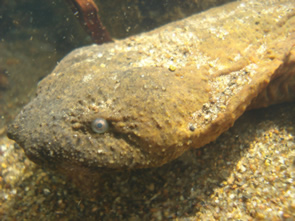
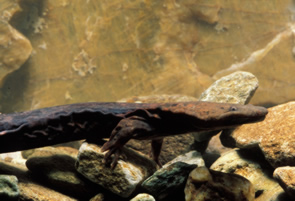
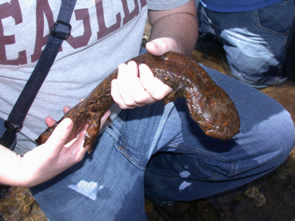
The body of a hellbender is flattened dorsoventrally.
Photo
by D Dennis
Photo by JD Willson
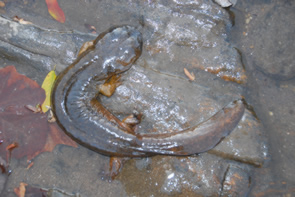
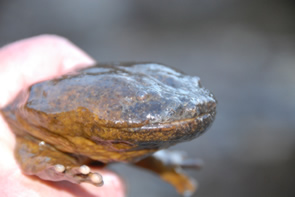
Photo by Mark Auten
Photo by Mark Auten
